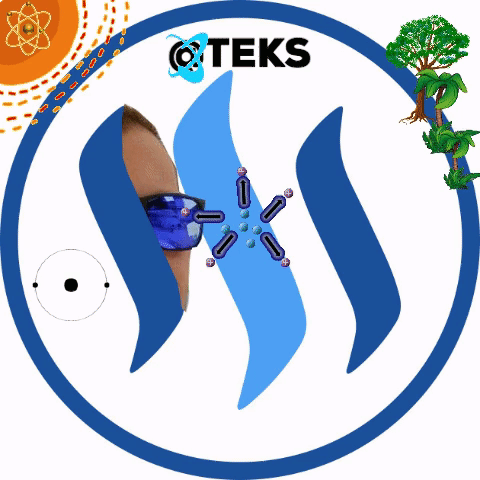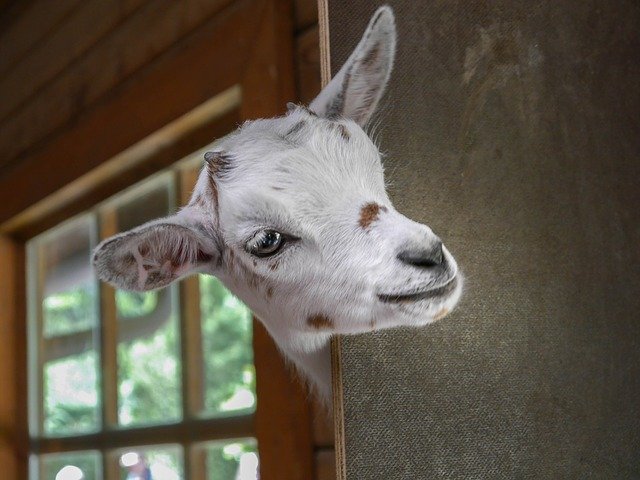~ The next little ice age Vol. 68 ~ Albedo effect ~
The importance of the use of calcium hydroxide since ancient times in regions with very high average temperatures and large amounts of sunny days per year.
"Albedo" is a word that derives from Latín, which can be translated as "whiteness".
1 - Earth radiation components - Credit: NASA
Observing the human constructions of the European Mediterranean we realize that there are common patterns for centuries. And I don’t mean the type of construction or even the materials used by the ancient inhabitants of these regions. If not the color used to paint the buildings of many towns and cities along the European Mediterranean basin. But North Africa is no exception in the use of the white exterior coating. The use of a mortar with the oldest calcium hydroxide base is known from 2600 BC, since it was used in the Pyramid of Cheops in Egypt. Although in the case of the pyramid the use of this compound was for a decorative reason, to enhance the construction, and not for thermal reasons as in the human settlements of the aforementioned regions.
Although this type of exterior decoration also has other purposes, such as the prevention of certain epidemics that had a great importance in the daily life of many of these populations. The relevance of this material in ancient Greece and the Roman Empire mainly used in interior decoration is not the goal of this post. Today we are just going to talk about the thermal effects of covering the exteriors of buildings with a pristine white color.
In the field of physics, albedo is called the relationship that exists between the light energy diffused by a surface through reflection and incident energy. Or in other words, the albedo effect determines the amount of radiation that any surface reflects with respect to the radiation that falls on it.
2 - Satellite Image of the extension of greenhouses in the quasi-desert region of south east Spain (Almería). - Source: DOI: 10.1021 / es402093q
According to this physical concept, a few years ago researchers from the University of Almeria (Spain) conducted a study on the impact of the huge number of greenhouses built with white plastic in the temperature at the local level. This study was published in 2008 by the Journal of Geophysical Research, edited by the American Geophysical Union, under the title "Tendency to surface cooling and negative radiative forcing due to the change in land use towards greenhouse agriculture in southeastern Spain"
”Greenhouse horticulture has experienced in recent decades a dramatic spatial expansion in the semiarid province of Almeria, in southeastern (SE) Spain, reaching a continuous area of 26,000 ha in 2007, the widest greenhouse area in the world. A significant surface air temperature trend of −0.3°C decade in this area during the period 1983–2006 is first time reported here.”
J. Geophys. Res., 113, D18109, doi:10.1029/2008JD009912.
Years later, the University of Berkeley carried out another study that, although it provides a little more precision in the measurement of the temperature at the local level, the conclusions are the same ones that the University of Almeria had published years before.
”The model output showed a mean annual cooling of 0.25 °C associated with a 0.09 albedo increase, and a reduction of 22.8 W m of net incoming solar radiation at surface. Mean reduction of summer daily maximum temperatures was 0.49 °C, with the largest single-day decrease equal to 1.3 °C. WRF output was evaluated and compared with observations.”
DOI: 10.1021/es402093q
With these data we can determine that a high albedo cools the planet, while a low albedo heats it, because most of the solar radiation is absorbed. And this is only one of the factors that act during the solar minimum period, decreasing the energy absorbed by the earth's surface as cosmic rays increase cloud cover. Because, clouds have a very high albedo, not as high as snow, but high enough to deprive the surface of our planet of a huge amount of thermal energy (heat). Thus this effect can not be disregarded, since many paleoclimatologists are convinced that the albedo effect was one of the determining factors for what today is known as "Snowball Earth". That as we know it was an era in which the earth was completely covered with ice.
As for the increase of the cosmic rays during the solar minimums and their importance in the formation of clouds, more specifically in the formation of condensation nuclei, we will speak in the futures post of this series.
The total solar irradiance or TSI also decreases during those periods of solar minimum, as we have seen in Vol 67, of course supported by different scientific studies.
Understanding the impact of the sum of the different climatic effects determined by Solar activity, or the lack of it, is basic to a good understanding of Earth's climate. Since its formation millions of years ago to this day. And although many of them were considered irrelevant, every day there are more scientific studies that begin to relate them to offer a real image of the future climate of our beloved planet Earth.
3 - State of the Arctic platform, yesterday. Credit: meereisportal.de
This is the state of the Arctic shelf, as we can see the ice is not only far from disappearing but it is increasing. And as we have seen before, as more and more light is reflected into space, less heat is accumulated and as a consequence we have a decrease in the temperature of that area.
References
1
https://mynasadata.larc.nasa.gov/radiation-energy-transfer/
Q1
Campra, P., M. Garcia, Y. Canton, and A. Palacios-Orueta (2008), Surface temperature cooling trends and negative radiative forcing due to land use change toward greenhouse farming in southeastern Spain, J. Geophys. Res., 113, D18109, doi:10.1029/2008JD009912.
http://onlinelibrary.wiley.com/doi/10.1029/2008JD009912/full
Q2, 2
Pablo Campra and Dev Millstein September 27, 2013 Mesoscale Climatic Simulation of Surface Air Temperature Cooling by Highly Reflective Greenhouses in SE Spain. DOI: 10.1021/es402093q
http://pubs.acs.org/doi/abs/10.1021/es402093q
Vol 67
https://steemit.com/science/@teks/the-next-little-ice-age-vol-67-global-warming-is-pseudo-science

Gift-thanks to @markperandin
Let's take care of the pale blue dot
Enjoy your day. Enjoy your life.

Gift-thanks to @stellabelle
This post received a 2% upvote from @morwhale team thanks to @teks! For more information, click here! , TeamMorocco! .
STEEM Price : 3.228 $
@teks payed 1.0 SBD to @minnowbooster to buy a stealth upvote.

transaction-id 99ce5bf39658c9c8e0b6ce7cfb30976927dfd8f7
@stealthgoat
This post has received a 0.90 % upvote from @buildawhale thanks to: @teks. Send at least 1 SBD to @buildawhale with a post link in the memo field for a portion of the next vote.
To support our daily curation initiative, please vote on my owner, @themarkymark, as a Steem Witness